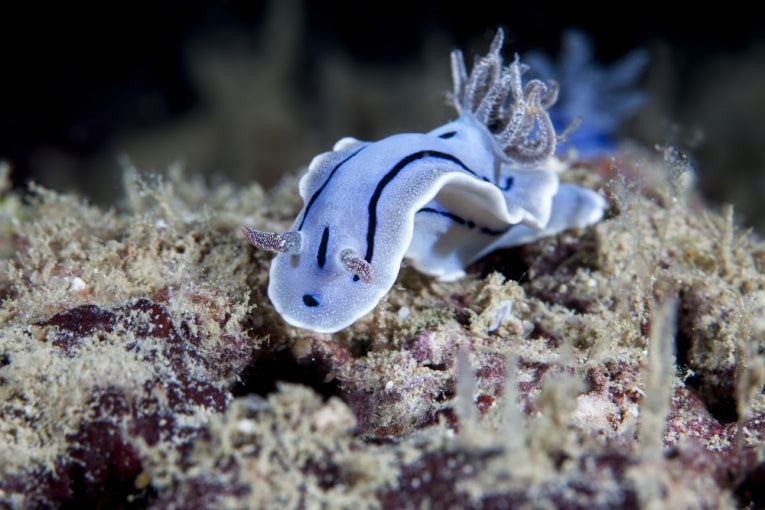The beauty of the nudibranchs is fairly well known and Glaucus is no slouch in the fashionista stakes. The blue dragon and the sea swallow are just two of its names, while Glaucus refers to a Greek fisherman who was transformed into a god. So there! Perhaps more important to people is the ability of this 3cm snail to use all the nematocysts from any Portuguese men o' war it has eaten. (This makes it ultra-poisonous when it fires them into you).
Relevant to its appearance is the animal's sexual morphology. In other words these pelagic nudibranchs have changed their sex organs and cannot interbreed even though they appear exactly the same. In the open spaces of the Indian Ocean, geographical isolation of a species would be thought impossible, so another mechanism had to be found in at least some species. The name for the air/water interface fauna and flora is the neuston, slightly separated from the plankton itself.
Dinoflagellate algae are the producers of the system, living symbiotically with the jellyfish, Porpita .This animal is preyed upon by molluscs. These are the bubble-rafting violet sea-snails and our friends the Glaucinae. Glaucus and its relatives are the only surface dwellers among the nudibranchs. The rest of the gang are usually benthic, surprising us with their colours on both rock and coral reefs.
In the University of Michigan and the California State Polytechnic University, Celia KC Churchill and her colleagues wrote this paper on the diversification on these nudibranchs, publishing in the Proceedings of the Royal Society B: Biological Sciences. The real discovery was the parallel nature of the changes made as the animals underwent speciation. 17 genera of the Aeolid nudibranchs were analysed and their phylogenetic relationships are now seen for the first time. Glaucus atlantis is a cosmopolitan species that seems similar worldwide. The G. marginatus samples, though, showed 4 hidden genetic "clades." The cryptic nature of this (new word for the dictionary) morphospecies means their individual distribution has so far been unknown.
Luckily this particular branch of the Mollusca has been extensively studied, so the morphology is well recorded. The external shape, the radulae of the jaws and the reproductive structures were most likely to differ. Only the reproductive structure called the bursa copulatrix backed up the genetics in the study.
It is present in the Glaucus atlanticus, but only present in 2 of the four morphospecies of G. marginatus. The indications are that the structure doesn't function even where it is present in these species, so it's even superfluous to those that have it! The two "losers" have evolved totally independently, so this seems to be a trend , the loss having taken place in several other nudibranchs too. As mating in the Glaucus is highly distinctive between species, the loss of one part could well have resulted in speciation, without any geographic isolation, although the authors are still busy wondering about the ifs and the buts of that.
Finally, the gene trees produced by the team place the floating slug with three other Aeolids. Learchis poica could be the closest relative. It has similar ecological traits, preying upon hydroids in the Sargassum algae at the sea surface. Glaucus spp. are famous for surviving upside down at the surface of the open ocean, attacking jellyfish.
The video on YouTube by Doug Beckers shows the two species currently recognised:










